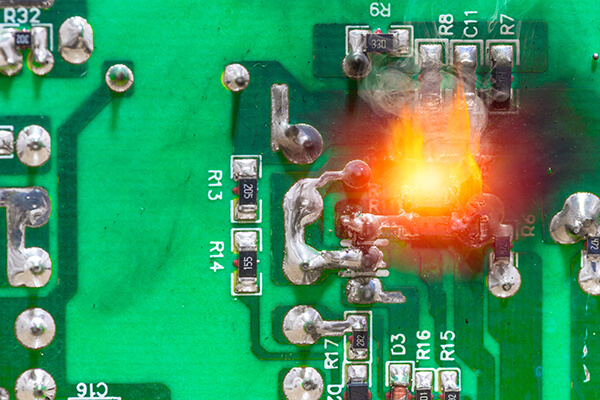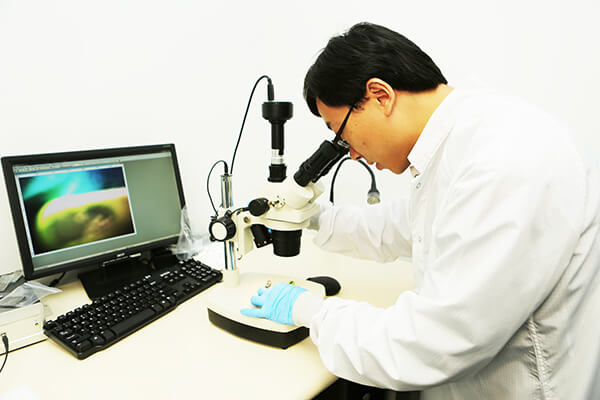Parylene in Extreme Temperatures

Sean Clancy, Ph.D. | August 27, 2020
Do you need product protection that can withstand temperature extremes? Parylene may be a good option if you utilize the correct type.
Learn more about why Parylene is used
Parylene in Cold Temperatures
Parylene performs relatively well in cold temperature extremes. As all polymer materials cool, they become less flexible, stiffer, and more susceptible to physical damage. Most conformal coatings crack when flexed one or two times at these temperatures, while Parylene films can withstand being flexed up to six to nine times.
Learn about Parylene chemical resistance and biocompatibility
Parylene Thermal Properties
As temperature increases, materials degrade, and Parylene coatings are no different. Each type has a temperature limit that, when reached, can shorten the life of the coating. As Parylene reaches the end of its lifecycle, it becomes less flexible and more brittle forming cracks that may allow corrosive ingress, putting your product at risk.
To reduce the risk of coating failures caused by temperature extremes, let your coating provider know what you expect and your project specifications.
Read more about Parylene C and Parylene Type N
Melting
The Parylenes’ melting points are very high, above typical solder and other circuit board materials, so melting is not an issue when temperatures increase. However, when certain temperatures are reached, the Parylenes transition from a more ordered/crystalline state to a more amorphous/plastic state. When Parylene is heating or cooling during this transition, its possible to cause mechanical stress on components, but in all practicality, the stress is minimal and rarely affects the product.
Learn more about Parylene pricing considerations

Cracks
In cases of high temperature, most of the Parylenes undergo oxidation. Exposure to oxygen and heat causes microscopic cracks in most Parylene films, which can become severe enough to cause visible cracks to the naked eye. Once formed, a crack can potentially expose the product to possible corrosion and contamination, which is problematic. Due to their chemical structures, Parylenes N, C, D, and VT-4 are susceptible to cracks under these circumstances. However, Parylene AF-4 can survive much higher temperatures than the other types. When oxygen isn’t present, all of the Parylenes can handle much higher temperatures.
Read Dr. Clancy’s other articles on Parylene optical properties and Parylene thickness
Color Changes
Sometimes, chemical changes such as oxidation can cause physical changes, as is the case with Parylene. When the film faces exposure to heat extremes, the typically transparent coating takes on a slight yellow hue as it is oxidized. Microcracks may also develop and grow larger. Around the edges of the cracks, the coating curls upwards with the appearance of dried mud. Additionally, if the product is in motion or the coating is flexed, cracks will quickly become worse.
Most things expand with higher temperature and shrink with lower temperatures, and Parylene is no different. If the rate of expansion (coefficient of thermal expansion) of the coating and the coated product are similar, it is less likely that cracks will form in the coating.
Temperature limits are an essential parameter that should factor into your decision about the type of Parylene you should use for your project.
Flammability Best Practices
To comply with industry standards and to ensure product safety, conduct flammability testing. These tests have shown that Parylene N continues to burn after a flame is removed for a short time, so products coated with Parylene N may need to rely on flame retardants in the other materials of the product. However, Parylenes C, D, AF-4, and VT-4 contain halogens that function as flame retardants. After removing the flame, these coatings self-extinguish at once. To test for flammability, use UL 94 V for vertical burn and UL 94 HB for horizontal burn. Although there may be industry-specific test methods, the UL 94 methods are standard and ensure reliability.
More Information on Parylene Services
The Big Picture
Temperature limits are an essential parameter that should factor into your decision about the type of Parylene you should use for your project. If your environment is challenging, with extremely high temperatures, the more exotic fluorinated Parylenes such as AF-4 and VT-4 are good choices. If the temperatures your Parylene-coated product are exposed to are limited, Parylene N and C are available options.
Put careful thought into which Parylene to use in the early design phase so that you can fully consider product engineering recommendations that may include product design changes. Having this conversation will improve coating performance, your product’s reliability, and your company’s reputation. There is a suitable Parylene to match any need for various conditions and environments; it’s a matter of clearly conveying these conditions early in the planning process.
Do you have questions about the Parylene coating process? HZO has Parylene coating equipment, Parylene masking automation, and Parylene removal expertise to lower costs. Contact us today to speak to one of our engineers about your project.
There is a suitable Parylene to match any need for various conditions and environments; it’s a matter of clearly conveying these conditions early in the planning process.
Sean Clancy, Ph.D.
Dr. Clancy, Director of Coating Technology at HZO and Anti-Corrosion Expert, has authored 19 publications with four co-authored publications, two patent applications, and has delivered over 550 individual projects and $1M+ revenue in root cause failure analysis.
View Dr. Clancy’s webinar, “Proven Methods for Achieving Advanced Product Performance and Protection From Corrosive Environments”

 Ryan Moore
Ryan Moore
Ryan is a 9-year veteran to the world of protecting electronics from harsh environments and a lover of all things technology.
Related
Discover how HZO can protect your product
